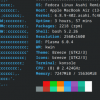More-Secure Linux Still Needs To Win Users
The National Security Agency built a version of Linux with more security tools that its technologists believe could help make the country's computing infrastructure less vulnerable. They've won over the Linux developer community with the changes. But success depends on its adoption by U.S. companies and government agencies, something that remains very much in doubt.
For more than a decade, the National Security Agency has worked on a way to use a computer's operating systems to control how software applications and users can access data. The agency succeeded years ago in creating these "mandatory access-control" features for specialized operating systems, but very few users deployed them. Taking a gamble in 2000 on the emerging Linux operating system, NSA started applying its security approach to the open-source code. The result is Security Enhanced Linux, which it hopes can raise the nation's overall level of cybersecurity.
"Quality of [software] code is crucial to the security of this nation," Dickie George, technical director of NSA's Information Assurance Directorate, said last week at an SELinux symposium. The directorate's mission is to research and develop the technology and processes that industry can use to protect itself and critical U.S. infrastructure from cyberattacks, George added.









































































